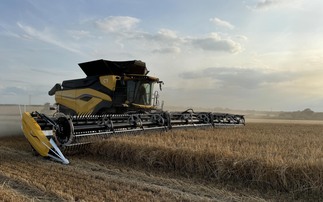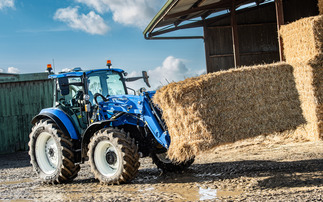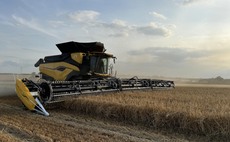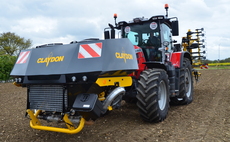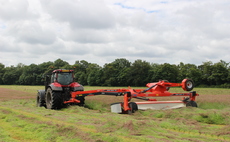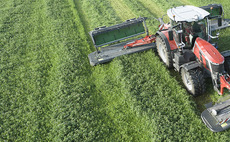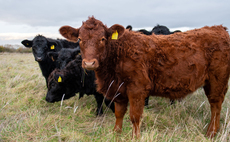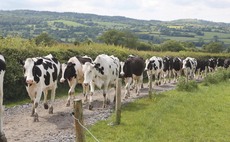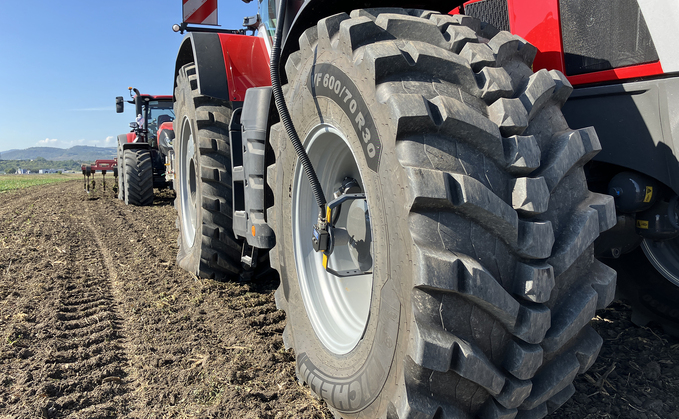
The Evobib tread pattern has been designed to suit both the road and field.
Michelin has unveiled plans to extend its range of Evobib tyres, starting this October. Currently, the brand's flagship dual-purpose tractor tyre comes in two sizes of VF 710/70 R42 and VF 600/70 R30, both suited to tractors in the 200 to 300hp bracket. Three new sizes - VF 650/60 R34, VF 650/65 R34 and VF 710/75 R42 - will be added to the range, aimed at tractors of 300hp and above (See Table 1).
Table 1
Michelin Evobib
|
Size |
Horsepower (hp) |
|
VF 600/70 R30 |
200-300 |
|
VF 710/70 R42 |
200-300 |
|
VF 650/60 R34 |
New 300+ |
|
VF 650/65 R34 |
New 300+ |
|
VF 710/65 R42 |
New 300+ |
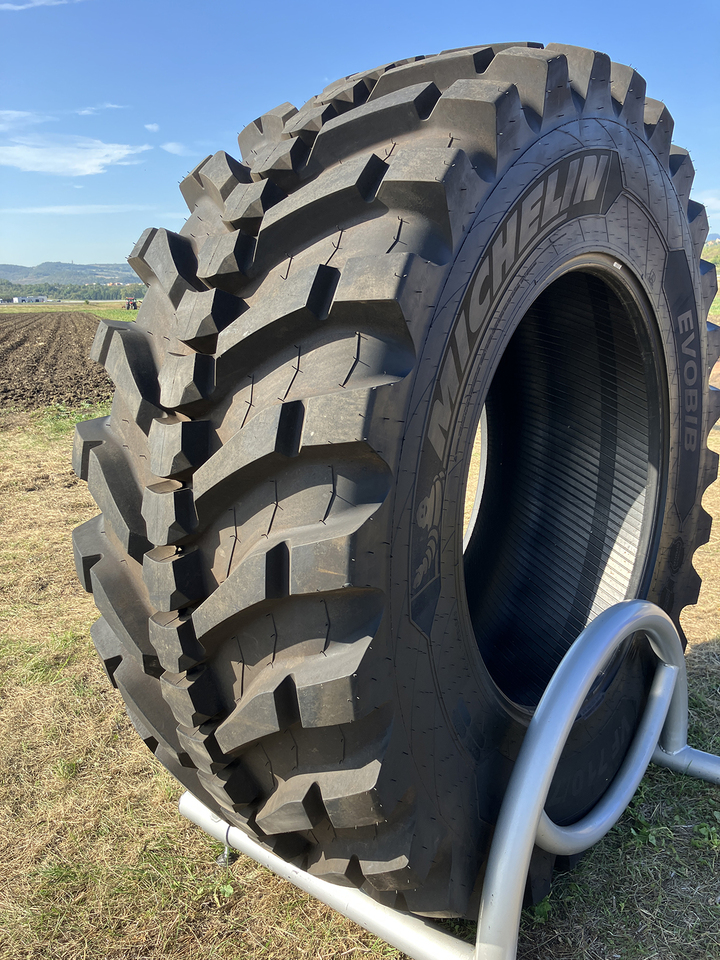
Born from the brand's Ultraflex technology, Michelin's Evobib two-in-one tyre concept was initially launched at SIMA back in 2017, where it received a Gold innovation medal. The manufacturer has spent the last six years since then testing the very high flexion tyre (VF) on a number of farms across Europe in varying conditions.
Oliver Coulomb, research and development director for Agricultural Tyres, said: "It has been a difficult process bringing a new tyre solution to the market, and optimising a solution for both road and field. One of the key changes to the design after field testing was lengthening and rounding the edges on the central band of lugs, which, on initial designs, were found to clog up with soil."
Michelin says opting for a central band of lugs around the tyre has key benefits to operator comfort when on the road.
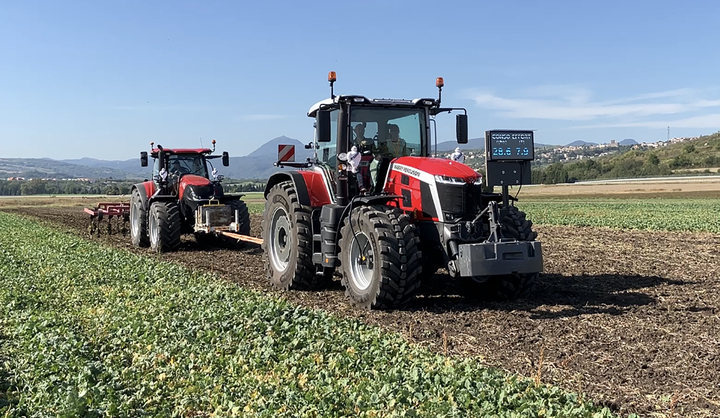
At Michelin's extensive 400-hectare research development and test facility in Ladoux, France, the benefits of the tyre operating both on the road and in the field were highlighted. Michelin says the Evobib has been specifically designed to operate in line with a Central Tyre Inflation System (CTIS) which offers viability to both its in-field and on-road performance. The brand is also developing an app to optimise the operator's understanding of in-field and road pressures to gain the best performance in reduction of soil compaction, fuel consumption and improved traction.
Rolling resistance is one of the main parameters of the EU's Vehicle Energy Consumptions Calculation Tool, which measures fuel consumption and carbon dioxide emissions. Rolling resistance is one of five forces - alongside gravity, aerodynamics, inertia and input power - to overcome mechanical friction, thus allowing a vehicle to move forward. In short, it is the amount of energy a tyre uses over a defined distance. Rolling resistance is responsible for up to one-third of a heavy-duty vehicle's fuel consumption, so reducing it goes a long way towards cutting carbon dioxide emissions.
The results of Michelin's road test revealed a greater travel distance was achieved in comparative time and forward speed parameters when operating at higher tyre pressures. Within the demonstration, a Fendt 828 VarioGrip (CTIS) fitted with Evobib VF600/70R30 at the front and VF 710/70R42 at the rear was operated with a total rear axle load of 12.8 tonnes and a front axle load 5t (see Table 2).
Table 2
|
Demo Rolling |
|
|
Fendt 828 |
|
|
Road Pressure |
|
|
Front |
1.3 bar |
|
Rear |
2.3 bar |
|
Distance travelled (metres) |
204 |
|
|
|
|
Field Pressure |
|
|
Front |
0.6 bar |
|
Rear |
1.1 bar |
|
Distance travelled (metres) |
166 |
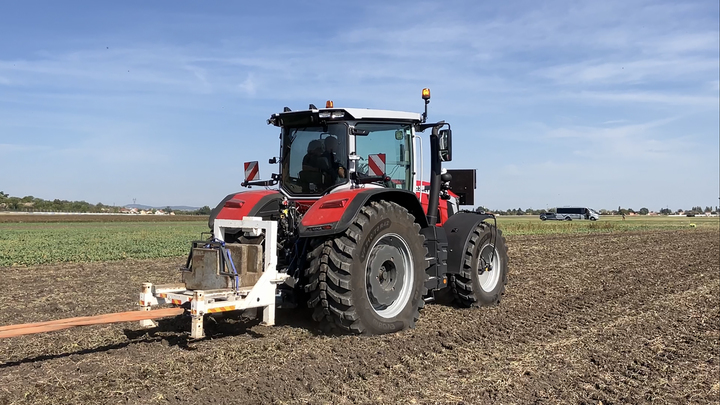
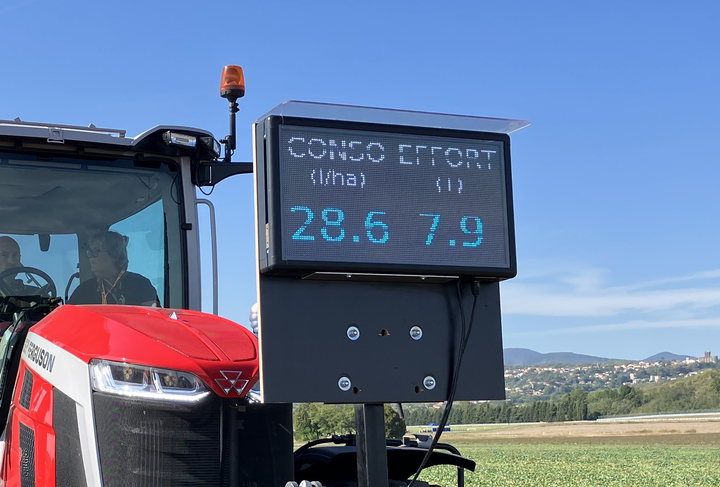
Michelin indicated that operating at the correct tyre pressure for the operating environment would deliver optimum performance.
Historically, the adjustment of tyre pressures between field and road has been time-consuming and inconvenient to the operator. With the development of various CTIS systems on the market, Michelin says the circle is now complete to fully optimise systems on-farm. The secondary demonstration used a Massey Ferguson 8S.265 fitted with the brand's own CTIS system from PTG, and Evobib VF600/70R30 front with VF 710/70R42 rear. There was a total rear axle load of 9.2t and a front axle load of 4.4t (see Table 3).
Table 3
|
Demo Fuel consumption |
|
|
Massey Ferguson 8S.265 |
|
|
Road Pressure |
|
|
Front |
1.2 bar |
|
Rear |
1.6 bar |
|
Drawbar Pull (tonnes) |
7.9 |
|
Fuel consumption (litres per hectare) |
28.6 |
|
|
|
|
Field Pressure |
|
|
Front |
0.6 bar |
|
Rear |
0.6 bar |
|
Drawbar Pull (tonnes) |
7.9 |
|
Fuel consumption (litres per hectare |
23.5 |
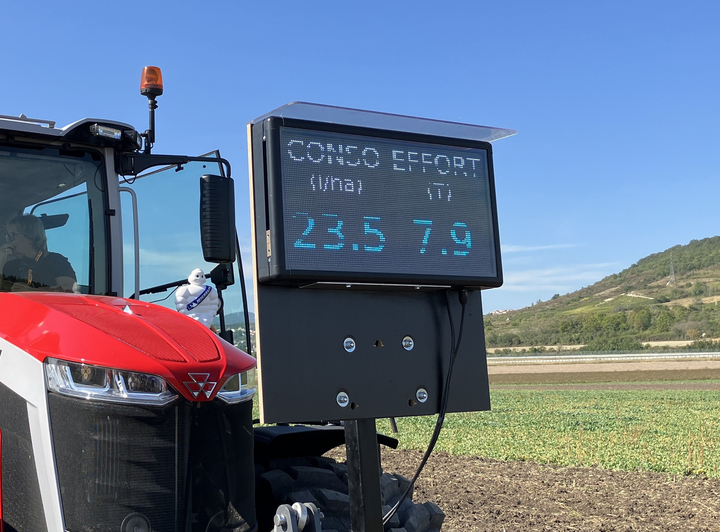
Although there are numerous variables between tractor brand, transmission, application and soil conditions, the advice from Michelin remains the same: sizeable fuel savings can be made by applying the correct tyre pressures for the job. In this case (see Table 3), the Evobib was able to achieve a five litre/ha saving, with better traction from low tyre pressures and an increased contact patch on the soil surface.
On an in-house road-to-field inflation comparison, the Evobib achieved a claimed 47 per cent variation in operational footprint compared to the brand's existing Axiobib VF tyre at 24 per cent.
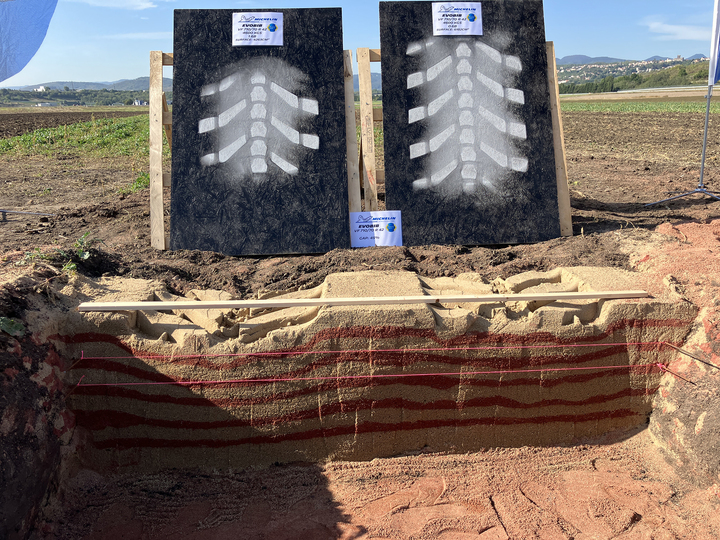
As the manufacturer's flagship agricultural tyre offering, the Evobib is aimed at large-scale, commercially minded farmers, operating high hours on-road and in-field. With the manufacturer noting purchase prices will be about 10 per cent higher than an equivalent-sized Axobib, prospective buyers should look closely at the potential fuel savings across the lifetime of the tyre to ensure they are a viable proposition.
There is no doubt that, working with a CTIS system, VF tyres offer many benefits in the reduction of soil compaction, but if operating these tyres without such systems or continually adjusting tyre pressure manually, then operators will seldom see their true benefit.







